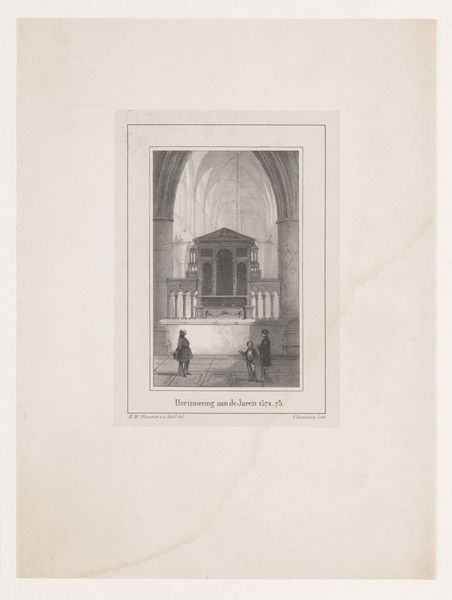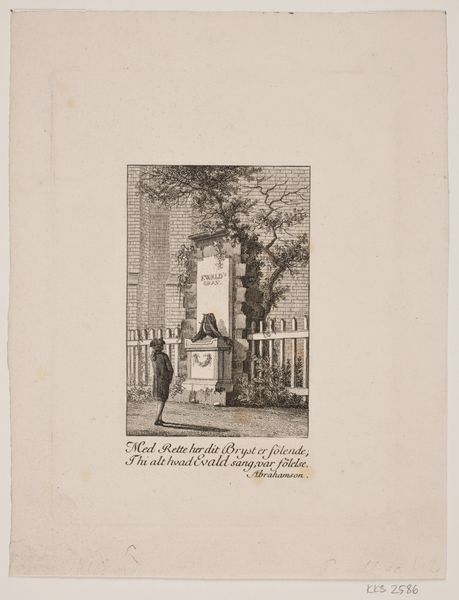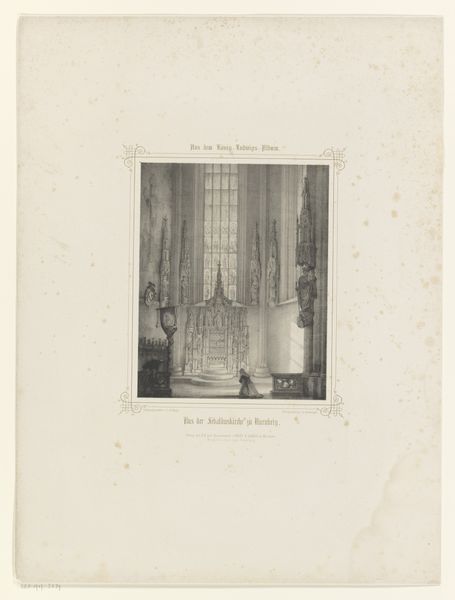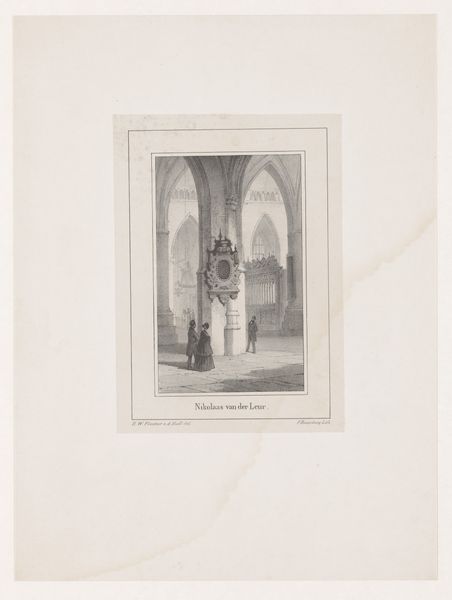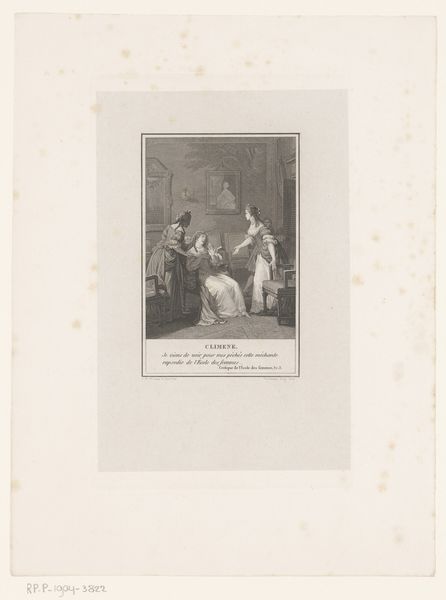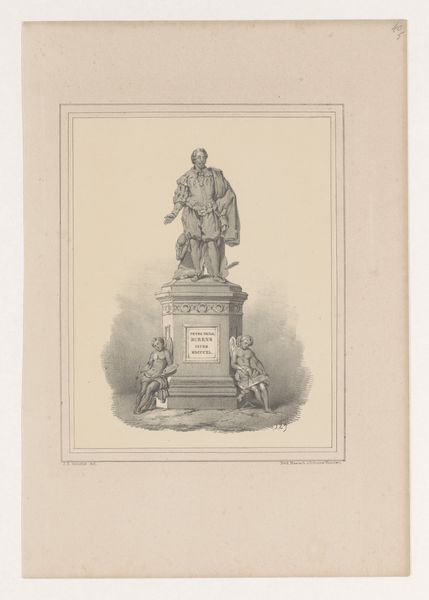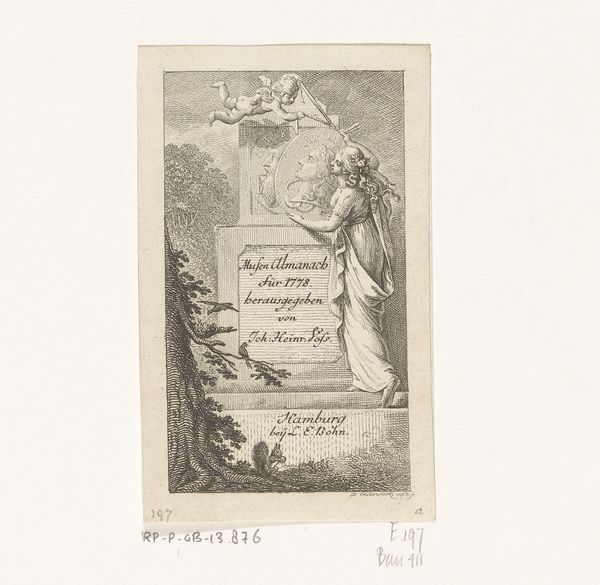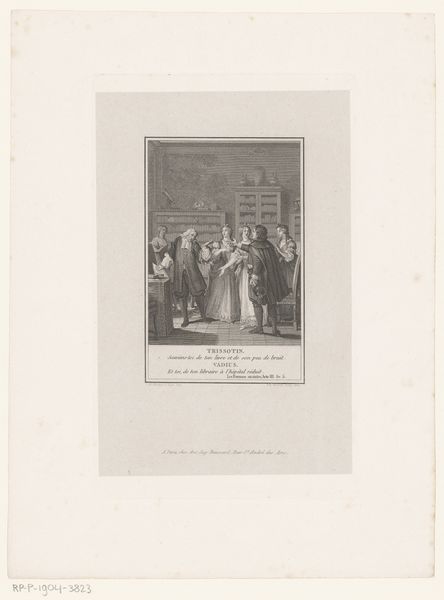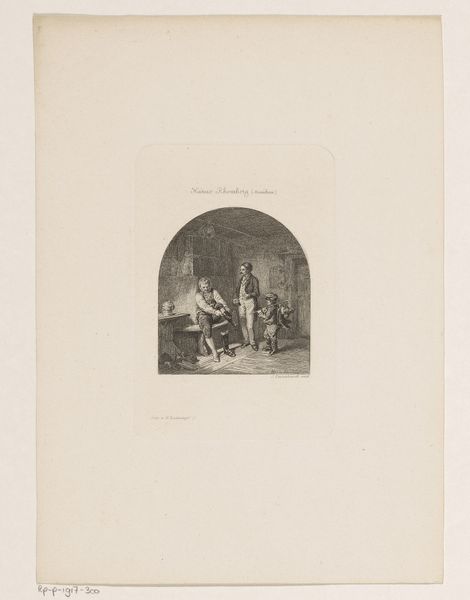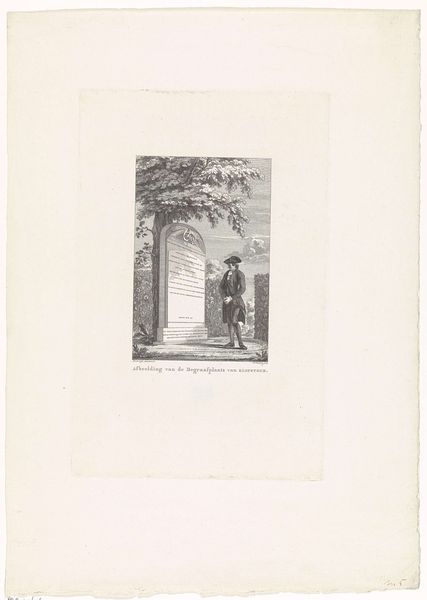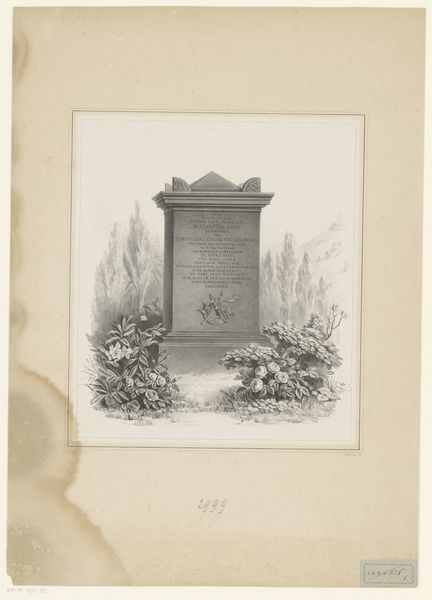
Grafmonument C. Brunings en F. W. Conrad in de Sint-Bavokerk in Haarlem 1817 - 1896
0:00
0:00
Dimensions: height 345 mm, width 260 mm
Copyright: Rijks Museum: Open Domain
Curator: At first glance, there’s a rather haunting grandeur here. What is your take on the engraving, Editor? Editor: This is “Grafmonument C. Brunings en F. W. Conrad in de Sint-Bavokerk in Haarlem.”, an engraving dating between 1817 and 1896. It’s currently held at the Rijksmuseum. There’s an architectural stillness. Curator: Indeed. The interplay of light and shadow gives the piece a somber tone. The use of engraving here allows for such delicate detailing. It draws you to the heart of this very grand monument. Editor: Romanticism lends itself so beautifully to architectural rendering. The monument stands starkly to honor these figures, C. Brunings and F. W. Conrad, undoubtedly towering figures in Dutch society. I am curious what role did these men play in the political and social context of their time. Curator: Brunings and Conrad were notable figures in Dutch water management. The monument would have represented an assertion of national pride in Dutch engineering prowess, given the centrality of water management to Dutch identity and economy. It becomes less a simple memorial and more a symbol of national achievement, presented within the sanctity and solemnity of a church. Editor: It's interesting how that public role translates into a formal visual language here. The monument's verticality juxtaposed with the vast emptiness of the church architecture, combined with these romantic stylistic elements, creates a feeling of the past and these leaders looming. It also begs the question about how we use imagery and what we choose to remember? Curator: An excellent question, especially given the context of shifting national identities throughout the 19th century. Editor: So, while formally the art strikes me as serene, and almost minimalist, with limited greyscale palette it serves, you highlight an essential element: its cultural context. Curator: Exactly, and these are aspects which shift depending on the lens through which it's analyzed. An apt lesson.
Comments
No comments
Be the first to comment and join the conversation on the ultimate creative platform.
